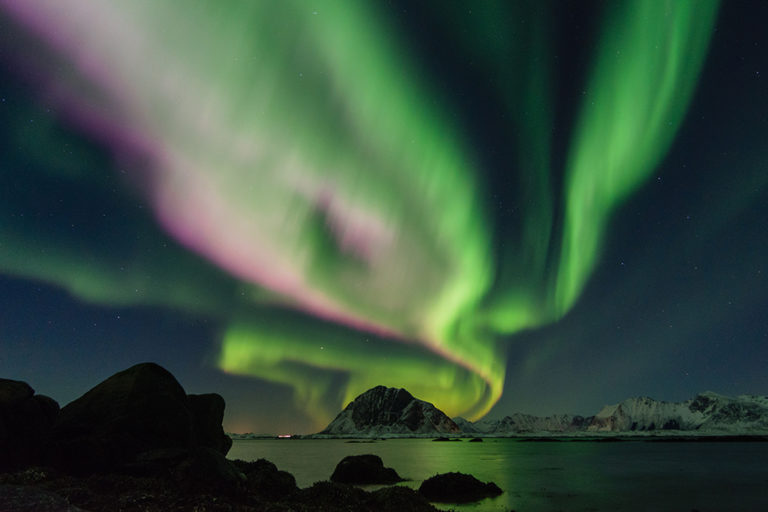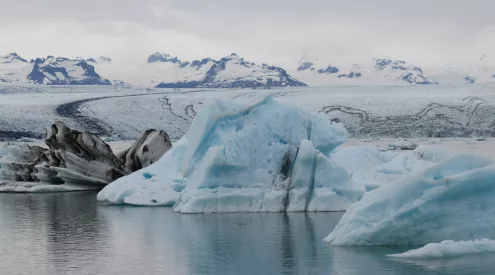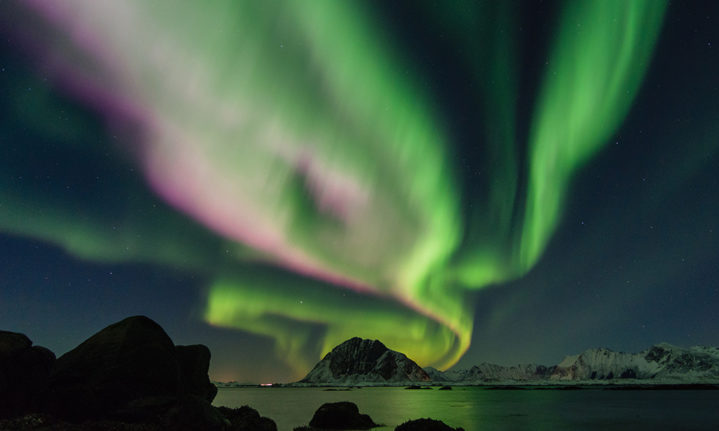The aurora borealis or northern lights can be seen over polar skies on dark nights between August and April, but tend to be more prolific during equinoxes in March and September.
The shimmering sheets of light can look peaceful, but according to NASA, the spellbinding, colourful lights ‘are the product of violent collisions between Earth’s atmosphere and particles from the Sun’.
Last week, residents of Northern Norway got to view artificially-created aurora borealis as part of a NASA-funded experiment.
In an attempt to understand the contribution that the aurora make to the total amount of energy that enters and leaves Earth’s geospace system (invisible kinetic and thermal energy is released by the collisions), the Auroral Zone Upwelling Rocket Experiment or AZURE was established.
Time-lapse of @nasa AZURE mission launching 2 sounding rockets from @AndoyaSpace about 4 hours ago. They created glowing clouds (background is real aurora) to study and track the flow of particles in the ionosphere @NASA_Wallops @TamithaSkov @StormHour @chunder10 @B_Ubiquitous pic.twitter.com/sFiCCP9LdY
— Adrien Mauduit (@ADphotography24) April 6, 2019
NASA launched two sounding rockets on the night of Friday, 6 April from the Andøya Space Center in Norway to create these artificial auroras. The impressive sight of purple and blue lights in unusual circular patterns was viewed by only a handful of people, but thanks to social media you can see them too.
The AZURE mission successfully launched back-to-back aboard two sounding rockets in Norway tonight. These colorful clouds created a light show in the sky, helping researchers track the flow of neutral and charged particles in Earth’s ionosphere. Details: https://t.co/aAp7FJDPgk. pic.twitter.com/vCZ3wFzzBo
— NASA Wallops (@NASA_Wallops) April 5, 2019
A natural aurora borealis is shown below.

Northern Lights, Lofoten, Norway. Image credit: Johannes Groll
Feature image: NASA Wallops


















